In today’s dynamic business environment, uncertainty is the only constant. Therefore, organizations need robust tools to anticipate potential outcomes and make informed decisions. SAP Analytics Cloud (SAC) Compass is a native feature designed to help planners and analysts simulate the impact of uncertain drivers, providing a probabilistic view of key performance indicators (KPIs) and enabling risk-aware decision-making.
What Is SAP Analytics Cloud Compass?
SAP Analytics Cloud Compass allows users to perform scenario modeling by leveraging the relationships defined between drivers and targets within an SAC model. Consequently, you can simulate multiple assumptions, compare probable outcomes, and answer critical business questions.
Simulations can be created either from a story table or directly from the Compass start page, thus providing flexibility depending on how you want to analyze your data.
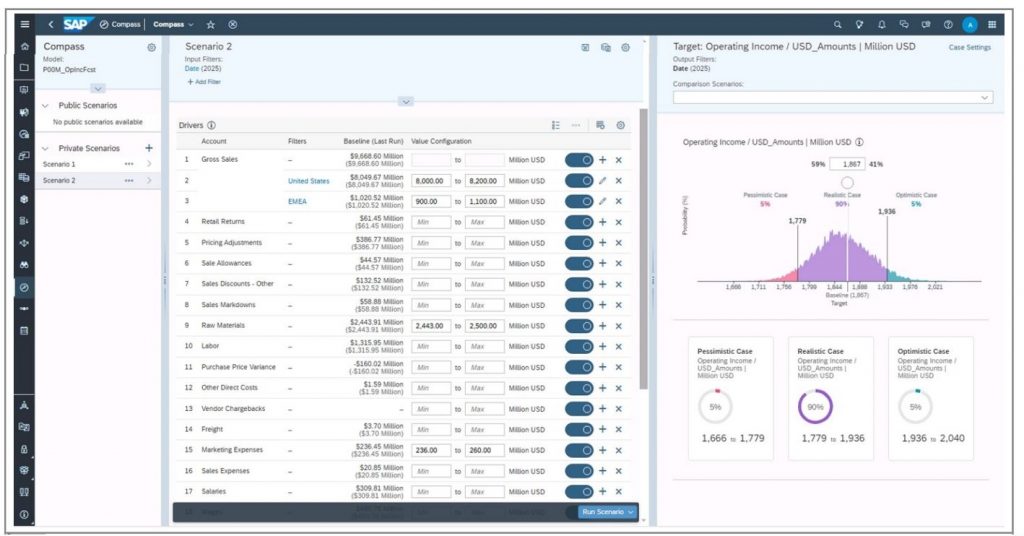
Compass Simulations vs. Time Series Forecasts
It’s important to understand the distinction between Compass simulations and time series forecasts. While both are predictive tools, they serve different purposes
- Time series forecasts analyze historical data trends to project future values. These are ideal when business questions revolve around “What happens if trends continue?”
For example: “What is the predicted operating income if COGS trends continue over the next four years?” - Compass simulations, on the other hand, use the Monte Carlo method, thereby generating a range of probable outcomes based on random inputs rather than historical trends. These simulations require a defined mathematical relationship between KPIs and their drivers.
For instance: “What are the probable results of operating income if COGS fluctuates between $10M and $20M?”
By combining time series forecasts with Compass simulations, you can enhance insight. First, forecast trends using historical data; then, layer Compass simulations to explore risk impacts on key drivers.
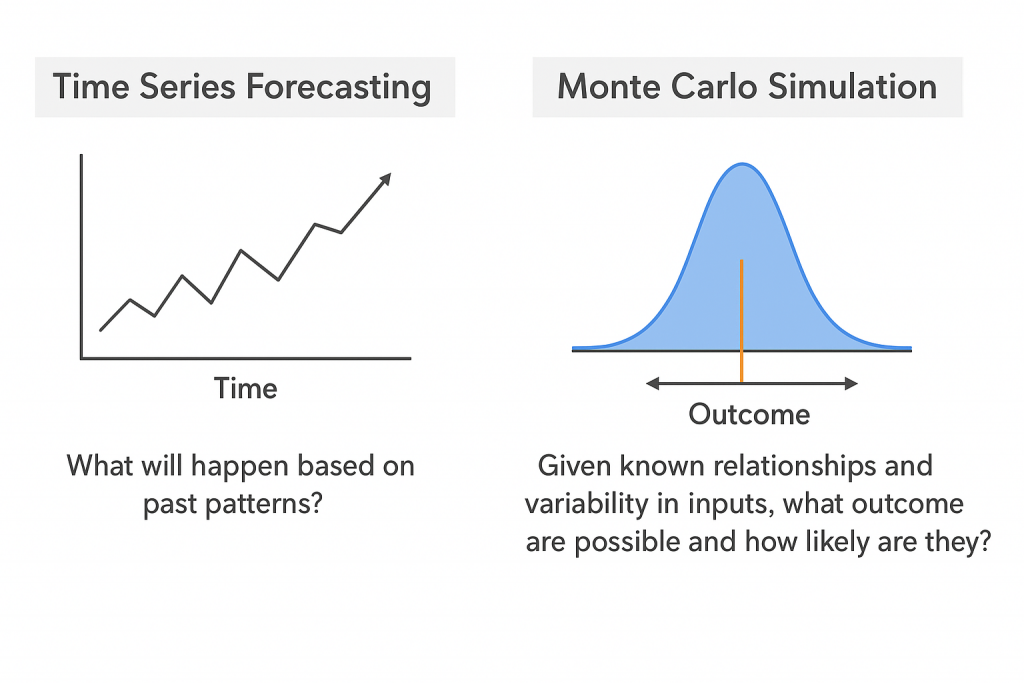
Licenses and Permissions
To use Compass simulations effectively, administrators must ensure the correct roles and access rights are configured.
- License Requirements: Standard Planning License
- Permissions: Users must have permissions for the Compass Simulation object, relevant models, and model data.

How to Create a Compass Simulation
One of Compass’s advantages is that the system automatically defines the relationships between targets and drivers. Users simply select the target KPI for simulation. There are 2 ways to create a simulation:
- From the Compass Start Page – Configure the simulation by selecting the model, target, and filters in the Simulation Settings dialog.
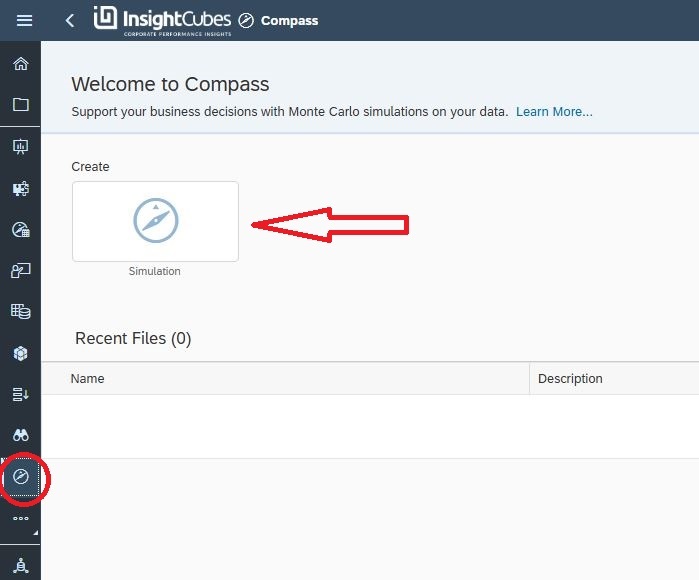
- Directly From a Story – Select a data cell; its context (model, target, filters) carries over to the simulation.

Note: Certain filters are unsupported, such as advanced filters, attribute filters, exclude filters, time range filters, and dynamic time filters.
Compass Simulation Configuration
Scenarios
- Private Scenarios: Personal simulations based on input filters, driver settings, and Monte Carlo iterations. Only accessible by the creator.
- Public Scenarios: Published versions of private scenarios, with drivers in read-only mode and accessible to all authorized users.
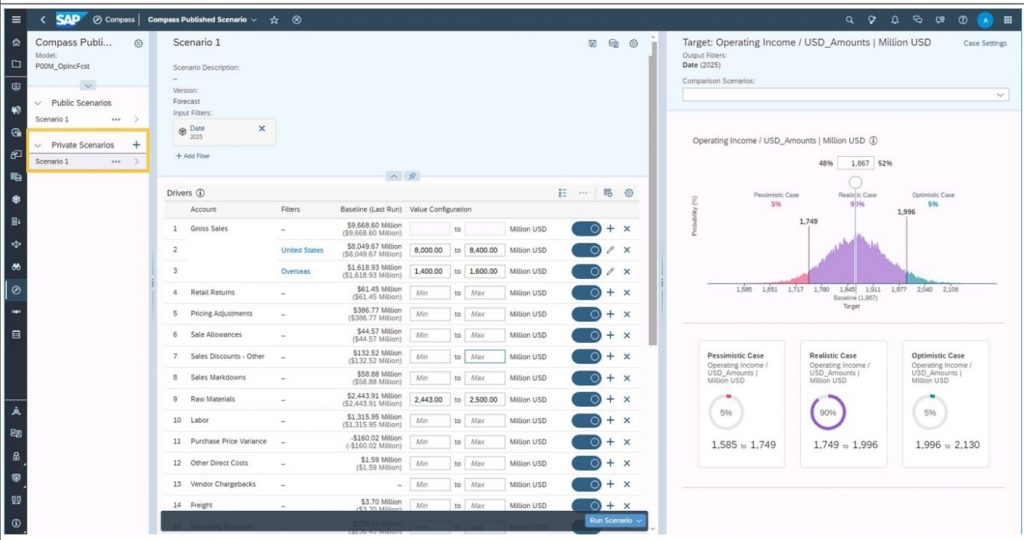
Drivers
Drivers represent inputs affecting the target KPI, such as leaf account members or base drivers. Key configuration elements include:
- Input Filters: Apply to all drivers and, by default, match simulation output filters.
- Value Configuration & Distribution: Define ranges of uncertainty and random sampling methods (uniform or normal distribution).
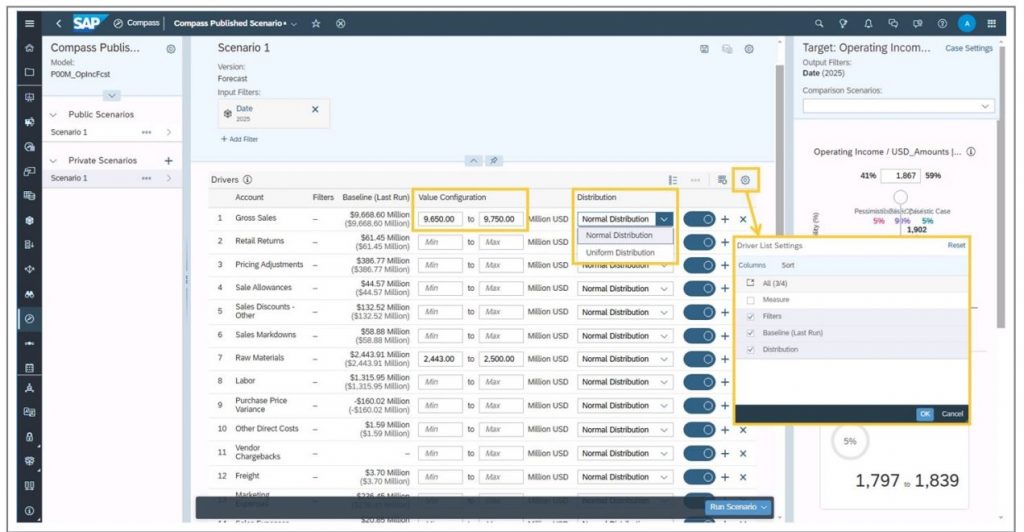
- Restricted Drivers: Limit uncertainty effects to specific slices, such as regions or product lines.
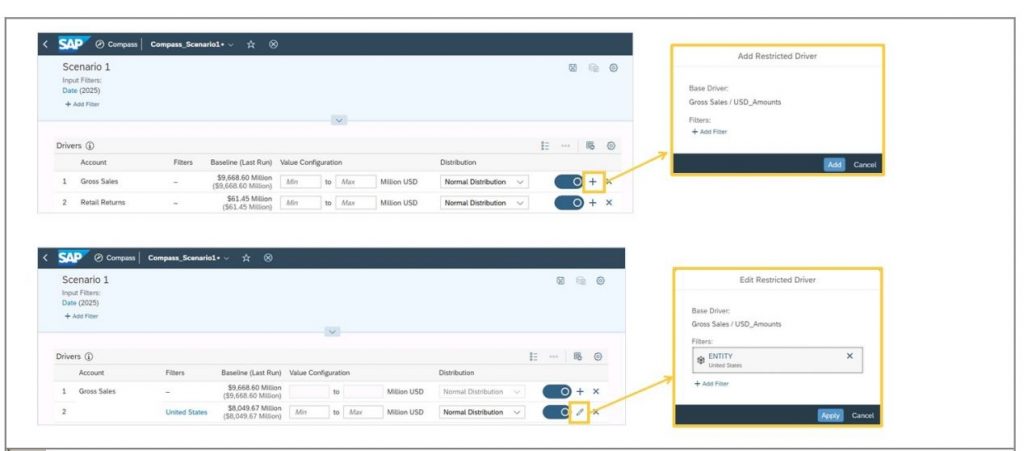
Running a Scenario
Simulations can run in three modes:
- Preview: 1,000 iterations – fastest, lowest accuracy.
- Medium Precision: 10,000 iterations – balanced speed and accuracy.
- High Precision: 100,000 iterations – slowest, highest accuracy.
Output Panel
Results are displayed graphically, divided into pessimistic, realistic, and optimistic cases, representing the probability distribution of target outcomes.

Creating and Comparing Additional Scenarios
Once a simulation is saved, you can create additional scenarios to test alternative assumptions. Specifically, you have two options:
- New Private Scenario: Start fresh with no previous configurations.
- Copy Existing Scenario: Include all drivers and value configurations from an existing scenario.
Subsequently, you can compare multiple scenarios to evaluate different strategies, driver configurations, or assumptions.
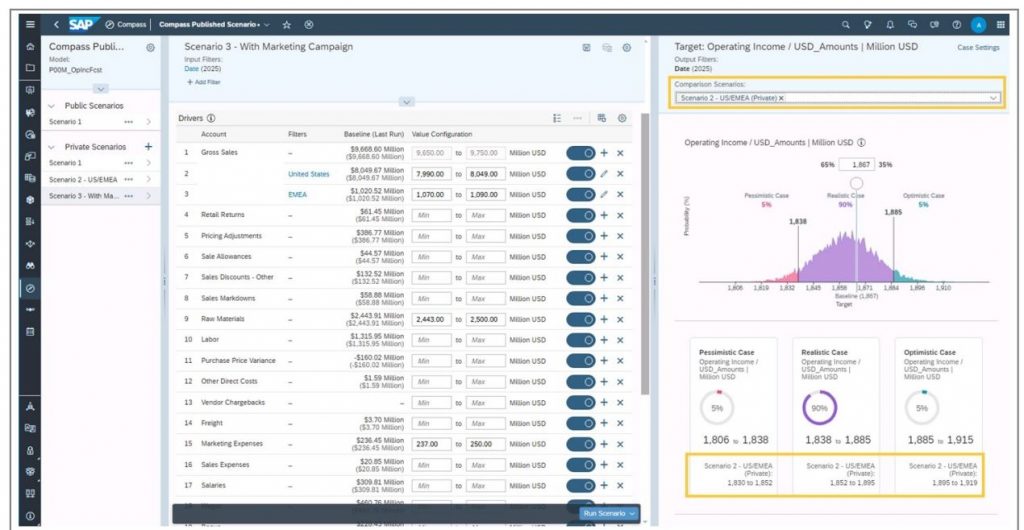
Caution: To modify an unsaved simulation’s settings, delete the previously saved private scenario first, as changes affect calculations.
Why Use SAP Analytics Cloud Compass?
SAP Analytics Cloud Compass helps organizations:
- Explore uncertainties and risk impacts on KPIs.
- Simulate multiple scenarios without complex setup.
- Combine predictive forecasts with probabilistic insights for better decision-making.
- Share insights through private or public scenarios for collaboration across teams.
By leveraging Compass, decision-makers gain a deeper understanding of potential outcomes, helping organizations remain agile in uncertain business environments.
